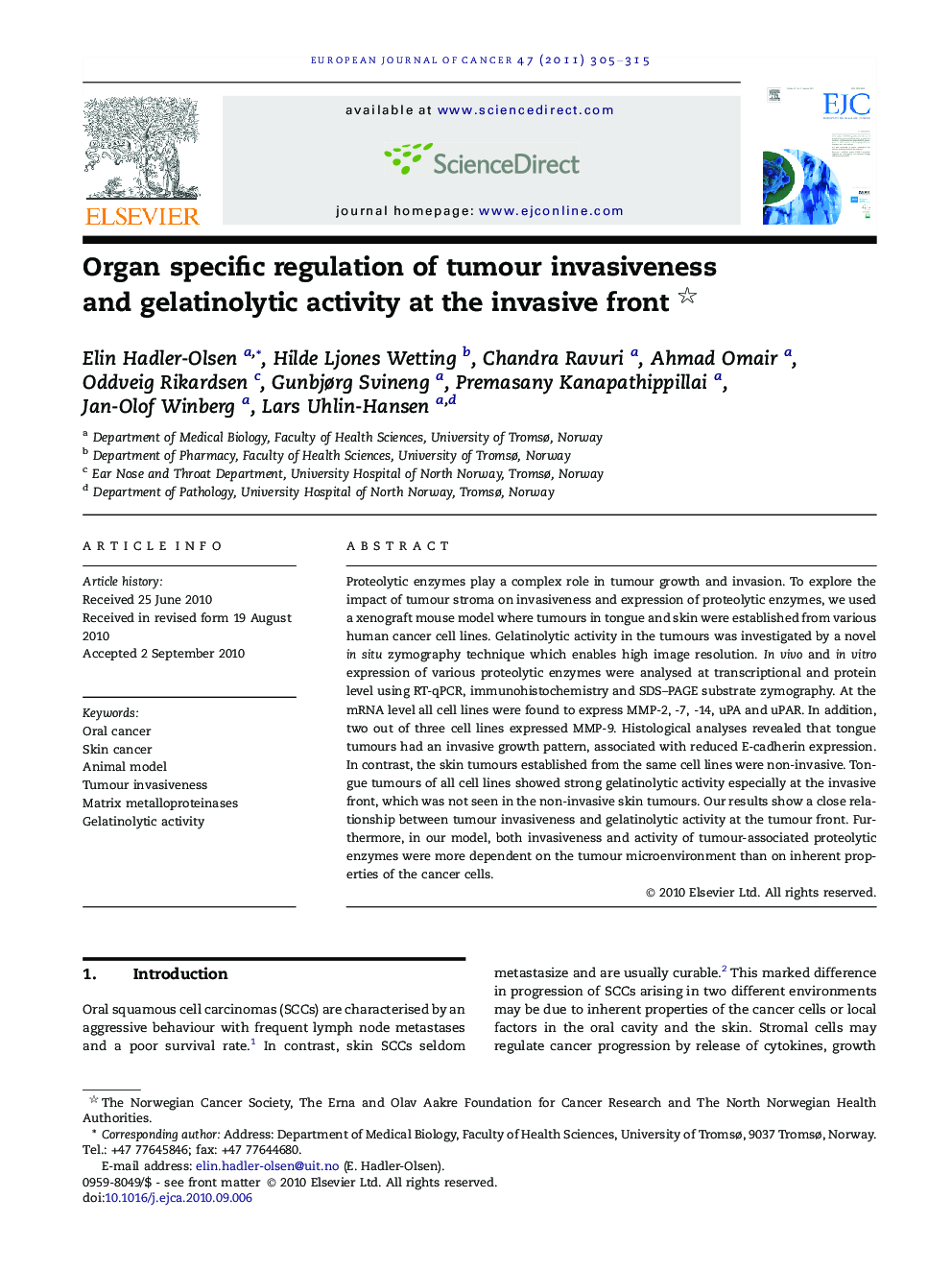| Article ID | Journal | Published Year | Pages | File Type |
|---|---|---|---|---|
| 2122974 | European Journal of Cancer | 2011 | 11 Pages |
Proteolytic enzymes play a complex role in tumour growth and invasion. To explore the impact of tumour stroma on invasiveness and expression of proteolytic enzymes, we used a xenograft mouse model where tumours in tongue and skin were established from various human cancer cell lines. Gelatinolytic activity in the tumours was investigated by a novel in situ zymography technique which enables high image resolution. In vivo and in vitro expression of various proteolytic enzymes were analysed at transcriptional and protein level using RT-qPCR, immunohistochemistry and SDS–PAGE substrate zymography. At the mRNA level all cell lines were found to express MMP-2, -7, -14, uPA and uPAR. In addition, two out of three cell lines expressed MMP-9. Histological analyses revealed that tongue tumours had an invasive growth pattern, associated with reduced E-cadherin expression. In contrast, the skin tumours established from the same cell lines were non-invasive. Tongue tumours of all cell lines showed strong gelatinolytic activity especially at the invasive front, which was not seen in the non-invasive skin tumours. Our results show a close relationship between tumour invasiveness and gelatinolytic activity at the tumour front. Furthermore, in our model, both invasiveness and activity of tumour-associated proteolytic enzymes were more dependent on the tumour microenvironment than on inherent properties of the cancer cells.
